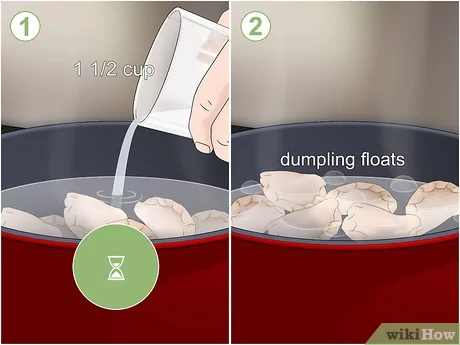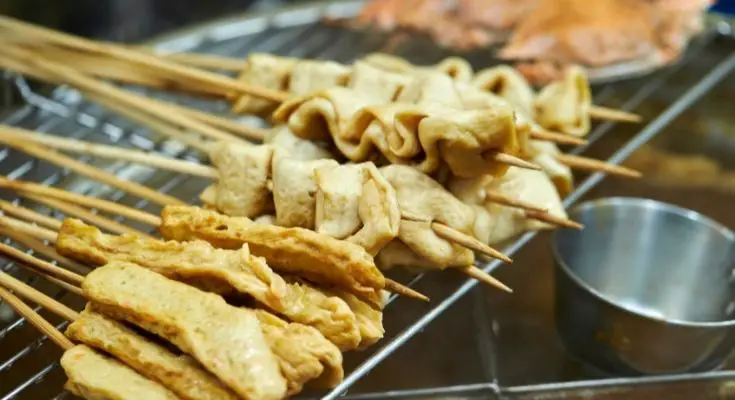How to Cook Frozen Har Gow
Har gow is a popular Cantonese dim sum dish that features delicate, translucent wrappers filled with juicy, savory shrimp. It’s no wonder why it’s a favorite among many Chinese cuisine enthusiasts. While fresh har gow is preferred by most, those who are short on time can opt for frozen har gow, which is just as delicious and convenient to cook. In this guide, we’ll cover everything you need to know about cooking frozen har gow.
Preparing Frozen Har Gow for Cooking
Before we dive into the different cooking methods for frozen har gow, it’s important to properly prepare the dumplings first. If not defrosted correctly, the dumplings can become soggy or fall apart during cooking.
Here are some steps to follow when preparing frozen har gow:
- Remove the desired amount of frozen har gow from its packaging.
- Place the har gow in a covered bowl or dish and leave them in the fridge overnight to thaw. This slow defrosting process ensures that the dumplings retain their shape and texture.
- If you’re in a rush and need to defrost the har gow quickly, place them in a colander and run them under cold water for a few minutes until defrosted.
Tips on storing frozen har gow:
- Make sure to store uncooked har gow in an airtight container in the freezer for up to three months.
- Avoid exposing the dumplings to air or moisture as this can affect their quality.
Methods for Cooking Frozen Har Gow
Frozen har gow can be cooked using one of three easy methods: boiling, steaming, or pan-frying. Each method yields delicious results and can be customized to your preference.
Boiling Method
Boiling is the most common method used in cooking har gow at Chinese restaurants. It’s simple, quick, and ensures that the dumplings are cooked through while retaining their delicate texture.
Equipment needed for boiling har gow:
- A pot of water
- A slotted spoon or strainer
Step-by-step instructions on how to boil frozen har gow:
- Fill a pot with enough water to submerge the dumplings.
- Bring the water to a boil over high heat.
- Gently place the har gow into the water using a slotted spoon or strainer.
- Stir gently to keep them from sticking together.
- Cook for around three to five minutes until they float to the surface. This indicates that they’re cooked through.
- Use a slotted spoon or strainer to remove the har gow from the boiling water and transfer them onto a plate or serving dish.
Tips for ensuring successful boiling of the dumplings:
- If you’re cooking multiple batches, allow the water to come back to a boil before adding more dumplings.
- Avoid overcrowding the pot as this can cause the dumplings to stick together.
Steaming Method
If you have a bamboo steamer basket at home, then this is an excellent way of steaming frozen har gow. Steaming ensures that the dumplings remain juicy and tender without being overly mushy.
Tools needed for steaming har gow:
- A bamboo steamer basket
- Parchment paper or cabbage leaves
- A pot or wok large enough to fit the steamer basket.
Step-by-step instructions on how to steam frozen har gow:
- Cut parchment paper or cabbage leaves into circles that can fit on the surface of the steamer basket.
- Place one layer of parchment paper or leaves onto the steamer baskets.
- Arrange the frozen har gow onto the parchment paper or leaves in a single layer, leaving enough space between each dumpling to prevent sticking.
- Fill a pot or wok with enough water to reach just below the bottom of the steamer basket. Bring to a boil over high heat.
- Place the steamer basket onto the pot or wok, ensuring that it sits securely inside.
- Cover with a lid and steam for around five minutes until cooked through.
- Carefully remove the steamer basket from the pot using tongs or oven mitts.
- Transfer the steamed har gow onto a plate or serving dish.
Tips for achieving ideal texture and flavor through steaming:
- Avoid stacking too many layers of har gow, as this can cause them to stick together during cooking. Instead, use multiple steamers if you need to cook several batches.
- To add extra flavor, place some ginger slices or scallion greens over the har gow before steaming.
Pan-Frying Method
If you prefer your har gow with crispy edges, then pan-frying is the way to go. This method also creates a delicious contrast in texture between the crispy skin and juicy filling.
When to choose pan-frying over boiling or steaming:
- When you want a crispy texture
- When the dumplings are going to be used as a main dish rather than an appetizer.
Equipment needed for pan-frying frozen har gow:
- A non-stick frying pan
- A lid that fits inside the pan tightly.
Step-by-step instructions on how to pan-fry frozen har gow:
- In a non-stick frying pan, heat one tablespoon of oil over medium heat.
- Carefully place the frozen har gow in the pan, leaving enough space between them. Ensure that the pleated side faces up.
- Add half a cup of water to the pan and cover with a lid immediately.
- Lower the heat and let it simmer for around five minutes until most of the water has evaporated, and the bottoms of the dumplings are golden brown and crisp.
- Carefully remove the dumplings from the pan and place them on a plate or serving dish with the crispy side facing up.
Tips for getting crispy edges and a soft filling:
- Make sure not to overcrowd the pan when pan-frying. Instead, work in batches if necessary.
- The key to achieving crispy bottoms is by allowing enough time for them to brown without burning. Check regularly while cooking.
Serving and Pairing Suggestions
Once you’ve cooked your frozen har gow using one of the methods above, it’s time to serve and enjoy them. Here are some serving and pairing suggestions:
- Arrange the har gow on a plate, garnish with scallions or cilantro, and serve hot.
- Pair with soy sauce, chili oil, sesame oil, or black vinegar dipping sauce.
- To make a complete meal, serve the har gow with other dim sum dishes such as siu mai or cheong fun.
- Enjoy with your favorite hot or cold tea. Chinese jasmine tea is a classic accompaniment to dim sum.
Conclusion
If you’re a fan of har gow but don’t always have the time to make them from scratch, frozen har gow is an excellent option. With the right preparation and cooking method, you can still achieve delicious dumplings that taste just as good as fresh ones. Try out each of the methods for cooking frozen har gow described in this guide to see which one you like best. Happy cooking!
1. Can I steam frozen har gow directly from the freezer?
Yes, you can steam frozen har gow directly from the freezer without thawing first. Place the frozen har gow in the steamer basket lined with parchment paper and steam over boiling water for about 8-10 minutes or until the filling is heated through and the wrapper becomes translucent.
2. How do I prevent har gow from sticking together while steaming?
To prevent har gow from sticking together, space them out evenly in the steamer basket and place a parchment paper sheet or cabbage leaf between each layer of har gow. This will help keep them separate during steaming and prevent them from sticking together.
3. Can I store leftover cooked har gow in the refrigerator or freezer?
Yes, you can store leftover cooked har gow in an airtight container in the refrigerator for up to 3 days or in the freezer for up to 3 months. When reheating frozen har gow, steam them for an additional 2-3 minutes until they are heated through.
4. What are some dipping sauce options for har gow?
Some popular dipping sauce options for har gow include soy sauce, rice vinegar, chili oil, or a combination of all three. You can also mix in ginger and garlic for additional flavor. Adjust the amounts to your taste preference and dip away!






